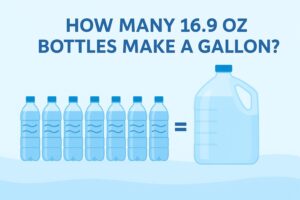
If you’ve ever finished a strict diet only to watch the pounds slowly creep back on, you’re not alone. Many people describe it as one of the most frustrating experiences in their health journey—spending weeks or months carefully tracking calories, only to feel their progress slip away once the diet ends. I’ve personally been in that place too, feeling hungrier than ever, drained of energy, and wondering if all that hard work was wasted.
This is exactly where reverse dieting comes in. Far from being just another trendy buzzword, it provides a structured bridge between dieting and real life.
In this article, we’ll explore the purpose of reverse dieting, how it works, and why experts and everyday people alike are finding it to be the missing step toward sustainable results.
What Is Reverse Dieting and Why Does It Matter?
Reverse dieting is a carefully planned way of eating after you’ve finished a fat loss phase. Instead of immediately returning to your pre-diet habits or staying in an unsustainable calorie deficit, you gradually increase food intake until your body reaches a new state of balance.
Some nutritionists call this a “maintenance phase” because the goal is to hold steady rather than lose or gain. It matters because the hardest part of dieting often isn’t the diet itself—it’s what comes after.
Without a strategy, hunger, cravings, and lowered metabolism push many people right back into weight regain. Reverse dieting gives you control over that transition.
What Is the Main Purpose of Reverse Dieting?

The purpose of reverse dieting is not about burning more fat. Instead, it’s about protecting the progress you’ve already made while giving your body time to reset.
The three most important goals are preventing rapid fat regain, reducing the physical and mental fatigue that comes from long diets, and helping you discover your new maintenance calorie level.
When you diet, your body adapts in ways that make long-term weight maintenance difficult. Hunger hormones rise, satiety signals drop, and your metabolism slows.
Left unchecked, those adaptations can undo months of effort. By following a reverse diet, you’re essentially teaching your body to stabilize at its new weight.
How Does Reverse Dieting Work?
To understand how reverse dieting works, you first have to recognize what dieting does. Extended calorie restriction lowers metabolism, reduces spontaneous movement, and heightens cravings. It is your body’s way of defending itself against starvation.
Reverse dieting gently reintroduces calories, which gradually restores energy balance. Hormones like leptin and ghrelin begin to normalize, meaning hunger is easier to manage.
Thyroid function improves, which supports metabolism. Over time, your body no longer feels like it is in “survival mode,” and you can maintain your new weight with less effort.
When Do You Actually Need a Reverse Diet?
Not every diet calls for a reverse phase. If you went through a short or moderate cut and still feel energized, you may not need one at all. But if you have pushed through an extended fat loss phase of eight weeks or more, chances are your body is feeling the strain.
The signs are clear: constant hunger, low energy, poor sleep, and lack of motivation to exercise. If you notice those symptoms after finishing a diet, a reverse diet is highly recommended.
On the other hand, someone who loses weight but still feels normal and not food-focused may be able to simply continue eating healthily without needing such a structured transition.
How Do You Start a Reverse Diet the Right Way?
The process begins by identifying where you ended your fat loss diet. For instance, imagine you finished a cut at 2,000 calories per day.
That number is your reference point. Then, estimate your new maintenance calories using calculators or proportional weight formulas. Let’s say it comes out to 2,500.
Instead of jumping straight to 2,500, you would begin in the middle, at 2,250. This midpoint provides enough fuel to prevent further weight loss while avoiding the sudden surplus that often leads to fat regain. From here, you gradually adjust depending on your body’s response.
How Should You Adjust Calories Each Week?
The first week is often misleading because of water fluctuations. Most people see the scale go up, but this is largely water returning to your muscles and tissues rather than fat. After that, progress becomes clearer.
To illustrate the adjustments, here is a simple example based on different scenarios:
| Scenario After First Weeks | What It Means | Adjustment to Calories |
| Weight continues to drop | Still in a deficit | Increase by ~15% |
| Weight is stable | At temporary maintenance but metabolism still low | Increase by ~10% proactively |
| Weight rises quickly | In a surplus | Reduce slightly until stable |
This adjustment process typically lasts four to eight weeks. By the end, your weight holds steady, energy is restored, and cravings ease. That is when you have officially discovered your new maintenance intake.
What Are the Common Mistakes People Make in Reverse Dieting?

One common mistake is assuming online calculators are precise. They provide estimates, but your actual needs may differ.
Another error is staying too long in a deficit, which keeps fatigue and cravings alive. People also panic about water weight gain in the first week, forgetting that fat cannot be gained so quickly.
Perhaps the most damaging mistake is celebrating the end of a diet with large amounts of processed food. While enjoyable, it often leads to overeating and rapid fat gain.
Finally, trying to reverse diet when you are at an extremely low body fat percentage, such as after a bodybuilding show, is unsustainable. At that point, the body needs mass gain to return to a healthy range.
Is Reverse Dieting Safe for Everyone?
For most people, reverse dieting is safe and effective. It is, after all, simply a method of adding food back in.
However, individuals with thyroid conditions, metabolic disorders, or a history of disordered eating should work with a professional before attempting it.
What is safe for one person may not be safe for another, and personalized care is always best.
Does Reverse Dieting Actually Help With Weight Loss?
Reverse dieting itself is not a fat loss strategy. Instead, it is a weight management strategy. Its main role is to help you hold on to the fat loss you achieved by teaching your body to adapt to a healthier baseline.
In some cases, people find they are able to eat more food than expected while still maintaining their weight, which feels like a metabolism boost. But its real strength is long-term stability, not immediate fat loss.
What Are the Other Benefits of Reverse Dieting?
One of the most satisfying benefits is being able to eat more food without regaining weight. This means better recovery in training, higher energy throughout the day, and improved mental health. Cravings subside, energy improves, and you feel less restricted, which reduces the risk of rebound binge eating.
Psychologically, it builds trust in yourself. You learn that dieting does not always have to end with weight regain, and that you can enjoy more food while still maintaining results.
What Foods Should You Eat on a Reverse Diet?
The best approach is to center your meals on nutrient-rich whole foods such as lean proteins, fruits, vegetables, and complex carbohydrates.
While the occasional indulgence is absolutely fine, relying too heavily on highly processed foods can throw off hunger cues and make overeating much more likely.
Think of reverse dieting as a continuation of your health-focused habits, not a permission slip for endless treats.
How Long Should a Reverse Diet Last?
Most people will stabilize within four to eight weeks. Those who finish extremely aggressive diets may need longer, while others may only need a month. The key sign that it’s complete is when your weight, hunger, and energy all feel consistent and manageable without daily struggle.
Who Benefits Most From Reverse Dieting?
Reverse dieting is often associated with bodybuilders, since they push their bodies to extreme leanness. But it can be just as useful for everyday dieters who have been through multiple cycles of weight loss and regain. Chronic dieters who always end up back where they started often find this approach helps them break the cycle.
The people who may not need it are those who still have higher body fat levels after dieting and don’t feel the typical fatigue symptoms. In such cases, simply eating healthfully may be enough.
What Does Science Say About Reverse Dieting?
Scientific studies confirm that dieting reduces metabolism and alters hunger hormones. Reverse dieting works by gradually repairing those adaptations. Research shows that structured calorie increases help restore energy expenditure and stabilize hormonal balance, making it easier to maintain weight loss long term.
How Does Reverse Dieting Compare to Other Post-Diet Approaches?
Some people choose to stop tracking altogether after dieting and return to eating freely. Others try to stay in deficit forever.
Both approaches have obvious downsides: the first usually leads to rapid regain, and the second keeps diet fatigue alive. Reverse dieting sits in the middle, offering structure and sustainability.
Real-World Example: What Does a Reverse Diet Look Like in Practice?
Imagine someone who lost weight on 2,000 calories, with estimated maintenance at 2,500. In week one, they increase to 2,250. The first week shows a small weight gain, mostly from water.
By week three, weight holds steady, so calories rise to 2,400. By week six, the person maintains their new weight consistently, feels less fatigued, and has more energy for exercise.
This is the reverse diet in action—a gradual, step-by-step transition that prioritizes stability over extremes.
FAQs About Reverse Dieting
How long does reverse dieting take to work?
Most people stabilize within four to eight weeks, though highly fatigued dieters may need longer.
Can reverse dieting boost metabolism?
It doesn’t supercharge metabolism instantly, but by reducing diet fatigue and restoring normal energy output, it does improve how your metabolism functions.
Will I gain fat during reverse dieting?
Small fluctuations are normal, but significant fat gain can be avoided if calories are added gradually.
Can beginners use reverse dieting or is it for athletes only?
Beginners can absolutely use it, though they may want to keep it simple. Athletes often apply it more strictly because performance depends on precision.
What should I eat if I’m craving junk food during reverse dieting?
Allow yourself moderation, but focus on whole foods for most of your intake to keep hunger signals stable.
Do I need to track macros while reverse dieting?
It is strongly recommended, at least in the beginning, to ensure adjustments are accurate and results are sustainable.
Final Takeaway: Why the Purpose of Reverse Dieting Matters
At its core, the purpose of reverse dieting is to create a smooth transition from fat loss to long-term maintenance. It prevents rapid fat regain, reduces diet fatigue, restores metabolic function, and teaches you how to live comfortably at your new weight.
Dieting success is not just about losing pounds—it is about keeping them off. Reverse dieting provides the structure to make that possible, proving that the end of a diet doesn’t have to mean the end of progress.


